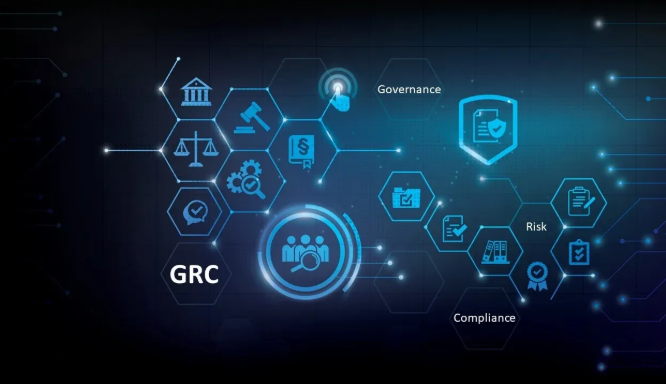In today’s rapidly evolving business landscape, small and medium-sized businesses (SMBs) face mounting challenges in maintaining compliance, managing risks, and ensuring operational efficiency. Governance, Risk, and Compliance (GRC) tools have emerged as a vital solution for these businesses, enabling them to streamline processes, safeguard against risks, and maintain a competitive edge. While large enterprises often have the resources to manage these areas in-house, GRC tools provide SMBs with an affordable, scalable way to achieve similar outcomes.
What is GRC, and Why Does It Matter for SMBs?
GRC stands for Governance, Risk, and Compliance. It refers to the framework and practices businesses use to ensure that their operations align with regulatory requirements, effectively manage risks, and adhere to internal policies. For SMBs, the concept of GRC is more than just a corporate buzzword; it’s a necessity.
Small businesses are not immune to risks, including cyber threats, financial losses, and legal penalties. Implementing GRC tools empowers SMBs to proactively address these challenges by automating processes, improving oversight, and fostering a culture of accountability.
Key Benefits of GRC Tools for SMBs
Knowing What is GRC, let’s now discover its perks:
1. Streamlined Compliance Management
Regulatory compliance is a major concern for businesses of all sizes. With ever-changing regulations across industries, staying compliant can be a daunting task for SMBs with limited resources.
GRC tools simplify compliance management by:
- Centralizing policy documentation.
- Providing real-time updates on regulatory changes.
- Automating compliance reporting.
These features save time and reduce the risk of non-compliance penalties, which can be especially burdensome for small businesses.
2. Enhanced Cybersecurity Measures
Cybersecurity has become a critical focus area for SMBs, as cyberattacks increasingly target smaller organizations. Many businesses turn to Cybersecurity and GRC Software to address this growing threat.
GRC tools integrate seamlessly with cyber security frameworks, offering:
- Real-time threat detection and monitoring.
- A centralized system for tracking vulnerabilities and implementing corrective actions.
- Tools for managing incident response and recovery plans.
By aligning cybersecurity initiatives with broader risk management strategies, SMBs can ensure their defenses are robust and comprehensive.
3. Improved Risk Management
Effective risk management is at the core of any successful GRC strategy. SMBs often lack the dedicated teams found in larger organizations, making tools that streamline risk assessments and mitigation essential.
Cyber security risk management services often pair with GRC tools to help SMBs identify, analyze, and address risks. These tools enable businesses to:
- Map risks to specific processes and objectives.
- Develop proactive strategies to mitigate potential issues.
- Monitor risk levels continuously and make data-driven decisions.
This approach not only reduces exposure to risks but also strengthens operational resilience.
4. Operational Efficiency and Cost Savings
For SMBs, time and budget constraints can be significant challenges. GRC tools eliminate redundancies and streamline workflows, allowing businesses to focus their efforts where they matter most.
By automating routine tasks such as compliance checks, risk assessments, and policy updates, SMBs can reduce administrative burdens. This increased efficiency leads to cost savings and enables teams to concentrate on strategic priorities.
5. Scalability and Flexibility
One of the standout features of modern GRC tools is their scalability. As SMBs grow, their risk and compliance needs become more complex. GRC software adapts to these changes, ensuring the business remains agile and compliant.
This flexibility also means that businesses can choose solutions tailored to their specific industry and operational requirements, further enhancing their value.
The Role of Cybersecurity and GRC Software in Today’s SMBs
Cyber threats and compliance requirements are becoming increasingly intertwined. By leveraging cybersecurity and GRC Software, SMBs can integrate their risk management, governance, and compliance efforts into a single, cohesive system. This integrated approach not only improves efficiency but also strengthens the business’s overall security posture.
Conclusion
For small and medium-sized businesses, the implementation of GRC tools is no longer optional—it’s essential. These tools provide a streamlined way to manage compliance, mitigate risks, and improve operational efficiency. By integrating solutions like cyber security risk management services and leveraging cybersecurity and GRC software, SMBs can protect their assets, enhance resilience, and remain competitive in an increasingly complex business environment.





Comments